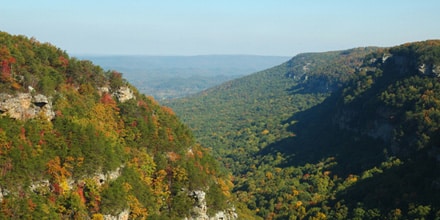
“The national park sites of Georgia attract visitors from across the country and around the world,” said regional director Stan Austin. “Visitors to Cumberland Island National Seashore enjoy solitude and unspoiled beaches, while visitors can also learn about the community and and see the birth home of Martin Luther King when visiting the National Historic Site that bears his name. For every personal reason they bring, visitors also bring an economic benefit to the communities they visit. This new report shows that national park tourism is a significant driver in the national economy – returning $10 for every $1 invested in the National Park Service – and a big factor in our state’s economy as well, a result we can all support.”
The national parks sites in Georgia are: Andersonville National Historic Site, Chattahoochee River National Recreational Area, Chickamauga & Chattanooga National Military Park, Cumberland Island National Seashore, Fort Frederica National Monument, Fort Pulaski National Monument, Jimmy Carter National Historic Site, Kennesaw Mountain National Battlefield Park, Martin Luther King Jr National Historic Site, Ocmulgee National Monument
The peer-reviewed visitor spending analysis was conducted by U.S. Geological Survey economists Catherine Cullinane Thomas and Christopher Huber and National Park Service economist Lynne Koontz. The report shows $15.7 billion of direct spending by 292.8 million park visitors occurred in communities within 60 miles of a national park. This spending supported 277,000 jobs nationally; 235,600 of those jobs are found in these gateway communities. The cumulative benefit to the U.S. economy was $29.7 billion.
According to the 2014 report, most park visitor spending was for lodging (30.6 percent) followed by food and beverages (20.3 percent), gas and oil (11.9 percent), admissions and fees (10.2 percent) and souvenirs and other expenses (9.9 percent).
To download the report visit http://www.nature.nps.gov/socialscience/economics.cfm.
The report includes information for visitor spending by park and by state.
To learn more about national parks in Georgia and how the National Park Service works with Georgia’s communities to help preserve local history, conserve the environment, and provide outdoor recreation, go to www.nps.gov/Georgia

